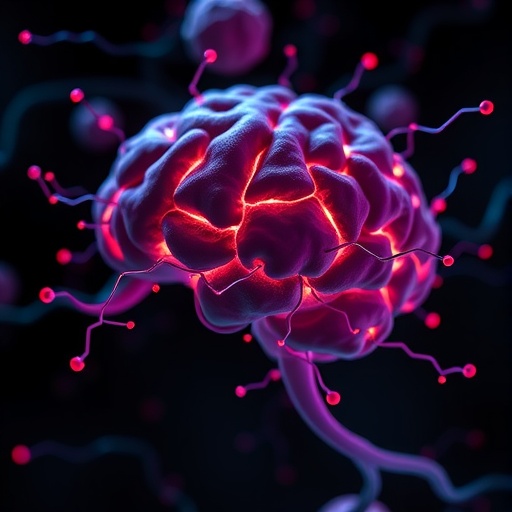In a groundbreaking exploration of the human body’s response to acute stress, researchers have unveiled intricate dynamics underlying physiological stress reactions that challenge long-held assumptions in psychophysiology. Traditionally, studies investigating the relationship between stress and autonomic nervous system activity have treated physiological markers—such as heart rate (HR) and heart rate variability (HRV)—as static snapshots. However, a cutting-edge study published in BMC Psychiatry in 2025 exposes the nuanced temporal trajectories these responses follow, emphasizing latent variability among individuals and hinting at profound implications for mental health research.
Acute stress triggers a cascade of adaptive physiological mechanisms to prepare the body for immediate challenges. Central to this reaction are cardiovascular adjustments: an elevated heart rate as the body mobilizes energy, and concomitant reductions in heart rate variability, which reflect the autonomic nervous system’s diminished regulatory flexibility. While these biomarkers have long served as gold standards in stress research, the assumption that their changes occur uniformly and instantaneously across individuals has limited understanding of the biological complexity beneath stress responses.
This new study pivots from conventional methodologies by examining continuous physiological data streams during a rigorously controlled laboratory stress induction lasting ten minutes. The researchers recruited 78 healthy adult female participants, collecting high-resolution heart rate and HRV data during the stress task and during periods immediately preceding and following it. By segmenting the stress episode into sequential 3.3-minute intervals, they achieved unprecedented temporal granularity in tracking how cardiovascular markers evolve in real time.
At the group level, the analysis reaffirmed known trends: heart rate surged quickly in response to stress, reflecting sympathetic nervous system activation. However, heart rate variability exhibited a more complex pattern, decreasing with a notable delay and displaying a rebound, or “overshoot,” once the acute stressor ceased. This delayed dynamic suggests that parasympathetic withdrawal and re-engagement involve temporally dissociable processes, contrasting the simplistic view of stress physiology as immediate and uniform.
Most strikingly, latent class modeling exposed subpopulations with distinct physiological trajectories, signaling that inter-individual differences in stress responses extend beyond mere amplitude to encompass timing and pattern. Among these groups was a subset whose heart rate variability paradoxically increased during the stress period—an atypical response that may reflect divergent autonomic regulation or alternative coping mechanisms. Intriguingly, these individuals concurrently reported higher anxiety levels, linking physiological idiosyncrasies with psychological profiles.
These findings challenge the neuroscientific orthodoxy treating heart rate and HRV changes as static or homogenous phenomena under stress. Instead, they support a dynamic systems perspective where multiple feedback loops and regulatory mechanisms interact in temporally complex ways. By embracing this conceptual shift, researchers may better decode how individuals differ in their stress reactivity, resilience, or susceptibility to stress-related psychopathologies.
The study also illuminates the limitations of relying on snapshot measurements, which risk obscuring meaningful within-person variability and temporal patterns critical to understanding stress vulnerability. Capturing the flux of physiological signals during stress enables more accurate phenotyping of stress responses, potentially identifying biomarkers predictive of anxiety, depression, or other mental health outcomes.
Moreover, recognizing that some individuals demonstrate atypical HRV increases during stress raises provocative questions about the underlying neurobiological substrates. Could these patterns arise from hyperactive parasympathetic engagement, unique emotional regulation strategies, or genetic differences in autonomic control? Elucidating these mechanisms may unlock novel therapeutic avenues for anxiety disorders, where maladaptive stress processing is a core feature.
This nuanced examination of physiological stress responses aligns with growing interest in personalized medicine, emphasizing that mental health interventions must account for individual variability in biological responses. Future research extending these findings to clinical populations and diverse demographic groups could refine predictive models of stress impact and tailor interventions accordingly.
Furthermore, the delayed recovery dynamics observed in heart rate variability underscore the importance of the post-stress period as a critical window for evaluating autonomic resilience and vulnerability. Interventions aimed at accelerating parasympathetic rebound might mitigate prolonged stress effects, thereby reducing risk for chronic stress-related diseases.
While the study focuses on healthy adult females, it opens avenues for exploring sex differences and hormonal influences on stress physiology. The exclusive female cohort provides clarity by controlling for sex as a confounder, yet cross-sex comparisons are essential for comprehensive understanding.
In sum, this pioneering investigation into the dynamics of physiological acute stress responses reveals a richly textured landscape of biological variability. It challenges researchers to move beyond static models, embracing temporal complexity and individual heterogeneity to unravel the intricate biopsychological tapestry of stress. As the scientific community continues to dissect these patterns, the promise of improved diagnosis, prevention, and treatment of mental health disorders looms ever closer.
Subject of Research: Physiological dynamics of acute stress responses and inter-individual variability in heart rate and heart rate variability trajectories.
Article Title: Dynamics in physiological acute stress response trajectories: uncovering latent variability.
Article References:
Rosenblum, S., Rab, S.L. & Admon, R. Dynamics in physiological acute stress response trajectories: uncovering latent variability. BMC Psychiatry 25, 361 (2025). https://doi.org/10.1186/s12888-025-06807-2
Image Credits: Scienmag.com




